There are two things you are almost always guaranteed to find on the Oregon Coast: Stunning beauty and lots of rainy, overcast days.
I took my family on a quick photo adventure along the central Oregon coast. We wanted to enjoy the last days of sunshine before school started up again. One location we visited was Devil’s Churn. It’s a place known for beautiful landscapes surrounded by crashing waves from the Pacific Ocean.
My plan was to shoot some sun-kissed landscapes. Unfortunately, we were greeted with overcast skies and lots of mist when we arrived.
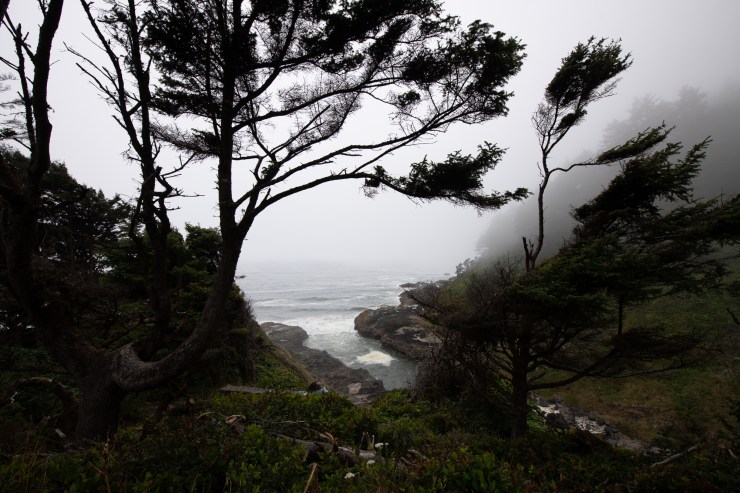
If you are a landscape photographer, then you know that beautiful, dramatic light is often what it takes to bring an image to the next level. Landscape photographers get up hours before dawn to be on location before sunrise. They do this with the hopes of capturing a few fleeting moments of glorious light.
Cloudy and overcast light often reduces outdoor scenes to flat and visually uninspiring landscapes. In these situations, since I know I won’t be able to capture a scene with vibrant colors or inspiring light, I use two techniques that help me produce dramatic images. The first is to maximize foreground texture and the second is to minimize the sky.
Maximize foreground texture
On overcast days, I’ve found that placing very graphical and detailed elements in the foreground helps me create visually compelling landscape images. Most landscape photographers know that you need to conscientiously compose a photograph by placing interesting elements into the foreground, middle ground and background of a scene. The foreground is often a flower or plant. The middle ground is often a lake, river or interesting landscape. The background is often a mountain or fascinating cloud formations.
In the case of my image from Devil’s Churn, two of those elements were essentially missing. The middle ground, comprised of rocks and ocean, was far away. While the clouds in the background completely lacked shape or texture (image below). To make this image work, I knew I would have to work overtime to find something with texture in the foreground. In this case, the foreground was the only thing that was going to give this photograph personality.
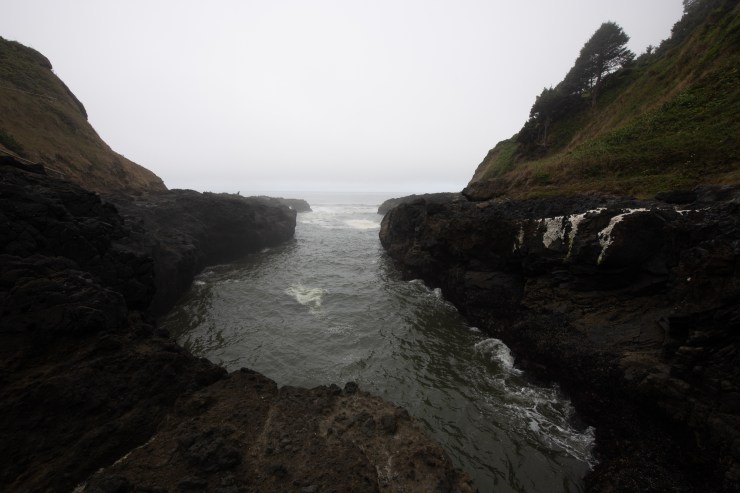
After searching for about an hour to find a foreground that would work for this scene, I finally came across some basalt that had been weathered by years of ocean wave action. From my standing position, the textured rocks were relatively small and insignificant. I knew I’d need to get my camera close to the ground to maximize its visual impact. Using my Nikon 14-24mm f/2.8 lens, I set up my tripod about two feet above the rocks and framed the composition so the detailed texture would take up the lower half of the image.
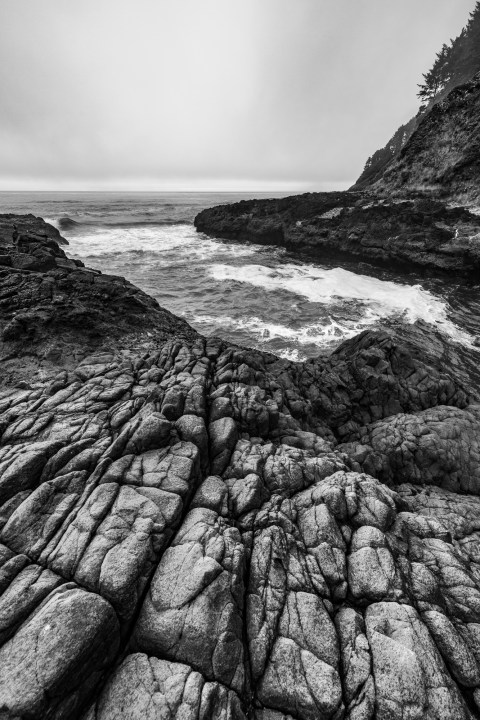
Minimize gray, overcast skies
Nothing ruins a grand landscape like a large area of undefined white clouds. The second technique I’ve learned over the years is to minimize, but not eliminate, boring gray clouds in my images.
In order for a landscape image to be successful, humans generally need to be able to see the horizon or at least be able to figure out where the horizon is supposed to be located. Because of this, I try to include the horizon in my landscape photographs.
At the same time, I know that gray clouds cause a landscape photograph to look drab and boring. So, if I crop the photo or compose the scene so that the horizon is against the edge of the frame, then the resulting image will always look a little bit odd. For example, if you look at the image below, you’ll see it just doesn’t look right without some sky.
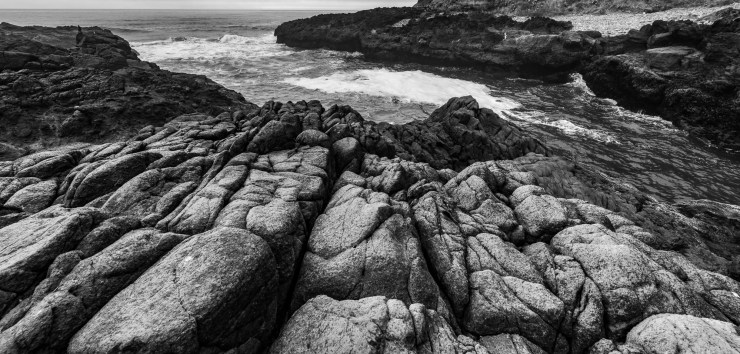
The solution is to minimize the amount of sky by including only the amount necessary for the photo to look OK to the viewer. The amount you should include is different for every photo and often comes down to a judgment call. I suggest framing the photo with a little more sky than you are comfortable with, then cropping it later in software when you have more time to think about the final composition.
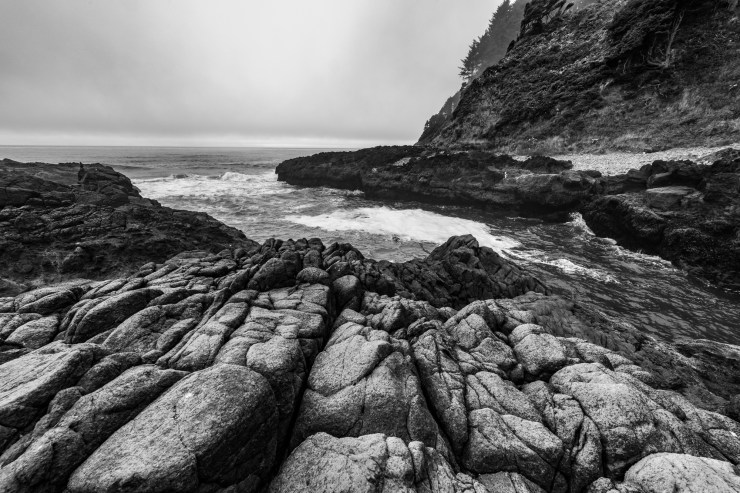
Hopefully, these two techniques will come in handy for you on your next photo adventure. Do you have any techniques you’ve found to be helpful when shooting on cloudy days? If so, leave a comment below and tell me about it!
Tell your story with the second annual Visual Storytelling Conference!
Experience four days of interactive, online training sessions featuring a range of educational content with experienced photographers and content creators. This free event kicks off with a series of technical boot camps to build essential skills, followed by live, online sessions on photography, video, business and social media. Join live from March 10-13, 2022!
